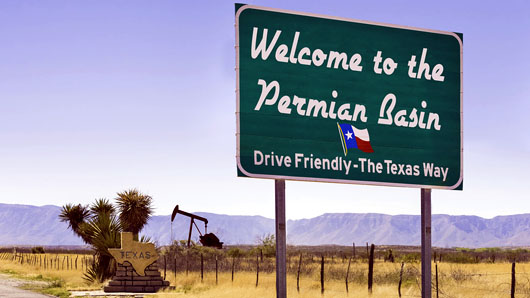Special to WorldTribune.com
The United States has resumed its role as the world energy model.
For the first time in decades, the “fracking” boom has not only propelled the U.S. into energy self sufficiency but again offered opportunities for export. Fracking is the process of injecting liquid at high pressure into subterranean rocks, boreholes, etc., so as to force open existing fissures and extract oil or gas.
 In December, the U.S. became a net exporter of oil and refined fuels. That is something that would have seemed unthinkable just a decade ago.
In December, the U.S. became a net exporter of oil and refined fuels. That is something that would have seemed unthinkable just a decade ago.
The development is the result of the federal government discovering a massive new reserve of oil and natural gas in Texas and New Mexico that it says has the “largest continuous oil and gas resource potential ever assessed.”
Related: With House majority, Democrats could threaten fracking industry, Nov. 13, 2018
Secretary of the Interior Ryan Zinke said the new reserve is believed to have enough energy to fuel the U.S. for nearly seven years.
Almost a third of the U.S.’s total crude-oil production comes from the Permian Basin where the reserve was found, making it the biggest shale-oil-producing region in the U.S. and the world.
Oil shale is commonly defined as a fine-grained sedimentary rock containing organic matter that yields substantial amounts of oil and combustible gas upon destructive distillation. Deposits of oil shale exist in many parts of the world.
Zinke suggests that the U.S. has achieved the long-sought goal of “energy independence”.
It’s become possible because of the technological breakthrough of developing oil in shale deposits. And as U.S. oil companies and technicians introduce shale mining to other parts of the world, the whole world energy picture is changing rapidly.
Reducing U.S. dependence on foreign oil imports has both enormous economic and political significance. Executives and presidents from Jimmy Carter to George W. Bush, none of whom anticipated a renaissance in U.S. domestic drilling and production, have had to cope with the U.S. reliance on Middle East and other foreign areas for imports to the U.S. This often has involved contradictory and difficult political decisions about regionally related areas; for example, the U.S. alliance with Israel has been subject to pressure from Arabian Gulf oil producers.
The reduction on dependence on foreign oil, of course, reduces an enormous burden on U.S. receipts from international trade. But at the same time, it makes it possible for Washington to pursue a more independent policy in the tortured Middle East which has been a major preoccupation of U.S. foreign policy decision-making.
Washington will no longer, for example, have to try to placate Saudi Arabia and its volatile despotic leadership, at least in terms of assuring American energy imports.
But the emergence of the U.S.’s again as the world’s top producer of oil and natural gas already weighs on whether to curtail world production in order to maintain a stable price level.
In early December the Organization of the Petroleum Exporting Countries in Vienna were up against such a decision driven in part by surging American oil output which has topped 11 million barrels a day.
The fracking boom has spurred massive increases in drilling from Texas to Appalachia, sharply lessening reliance on foreign energy sources.
The Arab oil embargo 45 years ago created painful supply shortages and sent world crude prices and U.S. balance of payments spiraling. Since then the problem of scarcity had defined U.S. thinking and strategy around oil, the world’s economic lifeblood, and even more extensive foreign policy issues.
In all, the new reserve is said to contain 281 trillion cubic feet of natural gas, 46.3 billion barrels of oil, and 20 billion barrels of natural-gas liquids, the Interior Department’s U.S. Geological Survey said.
Almost a third of the U.S.’s total crude-oil production comes from the Permian Basin where the reserve was found, making it the biggest shale-oil-producing region in the U.S.
“American strength flows from American energy, and as it turns out, we have a lot of American energy,” said Zinke.
“Before this assessment came down, I was bullish on oil and gas production in the United States. Now, I know for a fact that American energy dominance is within our grasp as a nation.”
Sol W. Sanders, (solsanders@twc.com), is a contributing editor for WorldTribune.com and Geostrategy-Direct.com.

